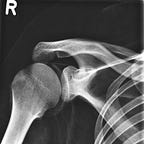Herpes Virus
Viruses contain either DNA or RNA genomes protected by a `Capsid`
Five different structures exist:
- Naked Icosahedron spherical
- Naked Helical plants only
- Enveloped Icosahedron
- Enveloped Helical
- Complex Bacteriophage
Viruses use the host cell for energy and other functional uses by means of hijacking cell organelles .
Herpes
Two types exist. 1 and 2.
Classified as retroviruses as they contain RNA in place of DNA
Both exhibit enveloped icosahedron structure
- Type 1 = Coldsores
- Type 2 = Genital Herpes
Herpes contains an outer membraneous layer which is derived from the host cell and contains viral glycoproteins which are inserted into the herpes virus after it buds off from the host cell following viral replication from a previous herpes virus.
The tegument is the space between the capsid and the envelope which contains viral proteins and enzymes.
The Herpes viruses are only spread via direct contact with mucous membranes or secretions from an infected person.
Replication
Envelopes attach or bind to the specific receptors located on the host cell extracellularly .
Capsid proteins uncoated and removed so that viral proteins and RNA can be released and transported to the host cell.
Within the cell, reverse transcriptase catalyses the creation of DNA corresponding to the RNA. After this the ribonucleus destroys the RNA.
DNA is taken into the nucleus where proviral genes are transcribed into RNA which serve as genetic material for the next generation of viruses.
The viral proteins, capsid proteins and reverse transcriptase are transported to the cell’s plasma membrane which forms new capsids for the next generation of Herpes. The new capsids assemble around the new viral genome and then bud off from the host cell to undergo transport around the host.
